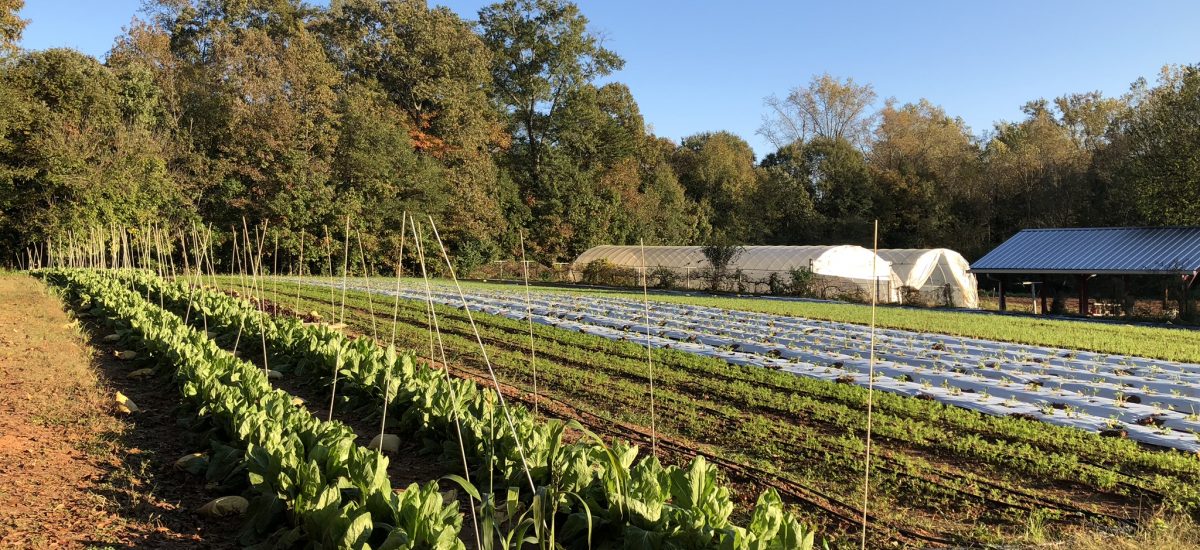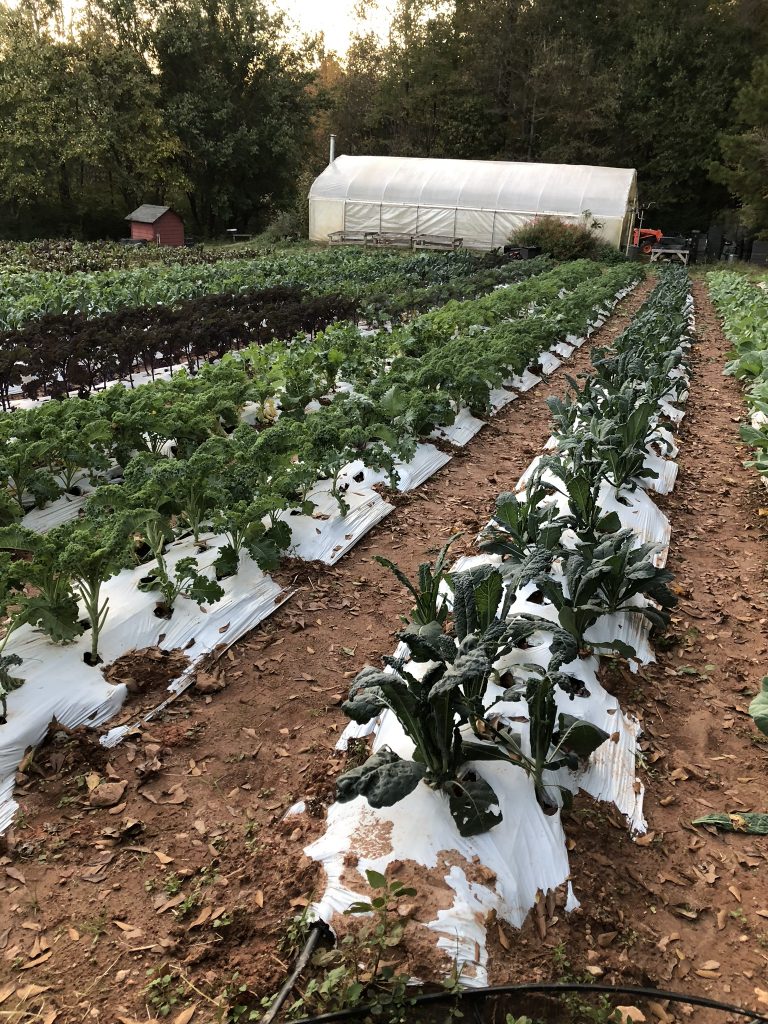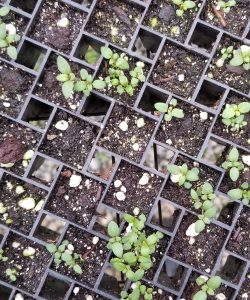Practicum Experience Paper 1

photo credit: “Love is Love Farm” Amanda Burns, All Rights Reserved 2015.
This paper is a reflection of my experience during a Practicum project for REL 210, Religion and Ecology, at Agnes Scott College.
For the first part of the Practicum, I participated in a visit to Love is Love Farm (Gaia Gardens) with a few other classmates and the gardener at Agnes Scott College, Lois Swords. The second part of the experience was helping out at a Food Waste Audit. This entire experience expanded my understanding of the food system and allowed me to better understand the process from different perspectives- the beginning and the end- from farm to waste. Experiencing the way that different systems within society work (first-hand) can seem daunting, or unnecessary, however it is something that is important to me. It makes me feel as if I’m a part of the system, and therefore I feel as if I can be part of the solution as well. Continuing to experience the different facets of societal “systems” throughout my life is a goal of mine, which I was able to realize during this practicum experience.
LOVE IS LOVE FARM (GAIA GARDENS)
Love is Love Farm is a small-scale farm run by Joe Reynolds, who started farming on the land plot owned by East Lake Commons in the metro Atlanta area in 2011. The farm was started in 1998, by the cooperative housing unit that owned the land, and Joe Reynolds is the fifth farmer to work on this land. He spoke about the history of the land in a lecture at Agnes Scott on Urban Farming.

photo credit: “Crops” Love is Love Farm All Rights Reserved, Amanda Burns 2015
Joe explained that the land in this area was historically agricultural and has a farming history dating back to the time of sharecropping. Now, it is a residential neighborhood, nestled between a big golf course and new apartment housing developments on either side. Joe is now the director of Georgia Organics, an organization developed to support the Slow Food Movement in Georgia and helps small, local farmers in their efforts to farm organically and sustainably on their land. (2019)
We went to the farm on a Friday afternoon. It was overcast and rainy, but the plants looked lush and happy, and the greenhouse was warm. Lois, the Agnes Scott gardener, brought seeds for us to plant- tomatoes, peppers, herbs, and flowers.
When we arrived, Joe (the farmer) and Demetrius (an employee on the farm, helping Joe) were mixing up potting soil and getting the farm ready to close for the night. Louis told us that the potting soil that Joe makes is one of the best mixtures of soil for starting plants, better than you can buy at any store. It smelled earthy and fresh with a hint of manure. Demetrius was spraying it with water to get it moist and then mixing it with his hands. With each turn of the soil, he was getting to the bottom of the tub, which was about the same size as a water trough you would see at a horse barn.
In The Unsettling of America, Wendell Berry writes, “The soil is the great connector of lives, the source and destination of all. It is the healer and restorer and resurrector, by which disease passes into health, age into youth, death into life. Without proper care for it we can have no community, because without proper care for it we can have no life” (1977, p.86). Although Berry is talking about soil that is in the ground, this potting soil is also the beginning of life (for the little tomato and herb plants), and it came from the end of life (the cast offs of life- fallen trees and leaves, animal excrement, bacteria/decomposers, etc.) as well.
The greenhouse was set up with tables along the edges and on one side, a covered shelving unit to house the little seedlings- helping them germinate quickly. Little baby plants covered the tables in the greenhouse, getting ready for the plant sale that Joe is having in April.
Lois helped us set up our seed trays, first covering them with dirt and filling in all of the little sections. We then poked less than half-inch holes in each section with our fingers, put one seed in each section, and then covered them up with dirt again.
The tiny seeds reminded me of a chapter in Braiding Sweetgrass, by Robin Kimmerer (2015), ““The Council of Pecans”. Kimmerer talks about the pecans as being “…high in calories and vitamins—everything you needed to sustain life.” Although pecans are nuts, which are a different type of seed than the ones we were planting, they still provide all that the seed needs to survive. She continues, “After all, that’s the whole point of nuts: to provide the embryo with all that is needed to start a new life” (2015, p.13).

photo credit: “Seedlings at Love is Love Farm” All Rights Reserved, Amanda Burns 2019
References
Berry, W. (1977). The Unsettling of America: Culture & Agriculture. Berkeley, CA: Counterpoint.
Kimmerer, R. W. (2015). Braiding sweetgrass: Indigenous wisdom, scientific knowledge and the teachings of plants. Minneapolis: Milkweed Editions.
Reynolds, J. (2019, February 28). Urban Farming. Lecture presented at Religion and Ecology with Tina Pippin in Agnes Scott College, Decatur.
